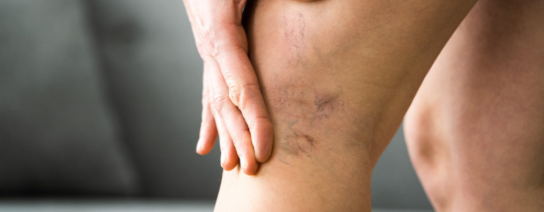
Main Cause of Varicose Veins? Causes, Symptoms
Varicose veins are a enlarged, twisted veins are often visible on the legs and can cause discomfort or even health complications if left untreated. Understanding the cause of varicose veins, along with their symptoms and risk factors, can help in early diagnosis and effective management.
What is Varicose Veins?
Varicose veins are swollen, bulging veins that develop when the valves in the veins fail to function properly. This leads to poor blood circulation, causing the veins to enlarge and twist. They commonly appear on the legs due to increased pressure from standing and walking.
Main Cause of Varicose Veins
The primary cause of varicose veins is weak or damaged vein valves. Normally, veins carry blood back to the heart, and tiny valves inside the veins prevent the blood from flowing backward. When these valves become weak or dysfunctional, blood pools in the veins, leading to their enlargement and twisting.
Other Causes of Varicose Veins:
- Prolonged Standing or Sitting: People with jobs that require long hours of standing or sitting may develop varicose veins due to inadequate blood circulation.
- Obesity: Excess body weight puts additional pressure on veins, leading to weakened valves.
- Hormonal Changes: Pregnancy, menopause, and birth control pills can affect vein elasticity and valve function.
- Aging: As we age, veins lose their elasticity, and valves weaken, leading to improper blood flow.
- Chronic Venous Insufficiency (CVI): A condition where veins cannot efficiently return blood to the heart, causing swelling and varicose veins.
- Injury or Trauma: Damage to veins from surgery, blood clots, or injuries can lead to varicose vein formation.
Symptoms of Varicose Veins
While varicose veins are primarily a cosmetic concern for some, they can also cause discomfort and complications. The symptoms include:
- Visible Twisted Veins: Dark purple or blue veins that appear twisted and bulging.
- Leg Pain and Heaviness: Aching or throbbing sensations, especially after prolonged standing.
- Swelling in the Legs and Ankles: Fluid retention due to poor circulation.
- Skin Discoloration and Itching: Irritation around the affected veins.
- Muscle Cramps and Restlessness: Particularly noticeable at night.
- Ulcers and Skin Sores: In severe cases, varicose veins can lead to venous ulcers.
Treatment Options for Varicose Veins
Varicose veins can be treated through surgical and non-surgical methods, depending on the severity of the condition.
Non-Surgical Treatments:
- Lifestyle Changes: Weight management, regular exercise, and avoiding prolonged standing help improve circulation.
- Compression Stockings: These apply pressure to the legs, promoting better blood flow.
- Sclerotherapy: A minimally invasive treatment that involves injecting a solution to close affected veins.
- Laser Therapy: Uses laser energy to shrink and close varicose veins.
Surgical Treatments:
- Vein Stripping and Ligation: Removal of affected veins through small incisions.
- Endovenous Ablation Therapy: Uses radiofrequency or laser energy to seal off damaged veins.
- Venaseal Closure System: A medical adhesive is used to close varicose veins permanently.
How to Prevent Varicose Veins?
Preventing varicose veins is possible by maintaining healthy circulation:
- Engage in regular physical activity, such as walking or swimming.
- Elevate your legs to promote blood flow.
- Avoid wearing tight clothing that restricts circulation.
- Stay hydrated and maintain a balanced diet rich in fiber and antioxidants.
Dr. Santosh Patil - Best Vascular Specialist in Pune
Dr. Santosh Patil is a highly skilled vascular specialist in Pune, offering advanced varicose vein treatments tailored to individual patient needs. With expertise in minimally invasive procedures like Endovenous Laser Ablation (EVLA), Radiofrequency Ablation (RFA), Venaseal, and Sclerotherapy, he ensures safe, effective, and long-lasting results with minimal recovery time.
His commitment to cutting-edge techniques and patient care makes him the best choice for varicose vein treatment. Whether you’re experiencing leg pain, swelling, or visible veins, Dr. Santosh Patil provides comprehensive solutions to restore healthy circulation and improve your quality of life.
Conclusion
If you experience persistent symptoms or complications related to varicose veins, consulting a vascular specialist is essential. Early diagnosis and appropriate treatment can prevent further complications and improve overall vascular health.
Understanding the cause of varicose veins and taking preventive measures can help manage the condition effectively. If you suspect you have varicose veins, consult with Dr. Santosh Patil for the best treatment options.
